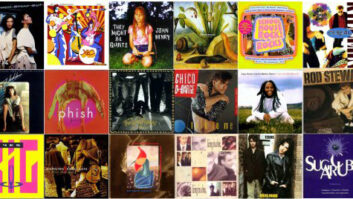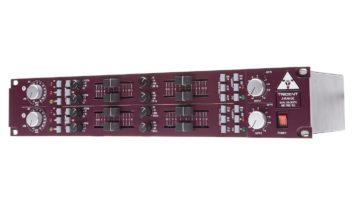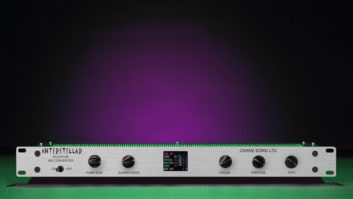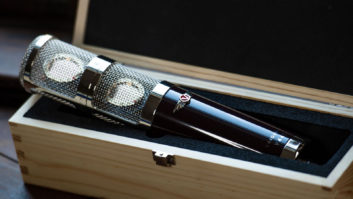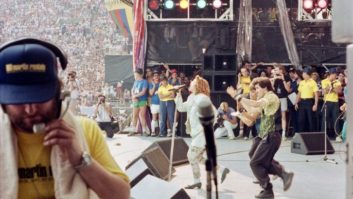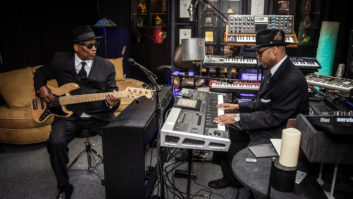
Ten years ago, this article would have been very different. The concept of digital consoles for sound reinforcement was in its infancy, with a single entry, the InnovaSon Sensory, just a few months old. Meanwhile, the number of choices in the big boards that offer 40 or more inputs was limited to a few models at most; with few exceptions, back then the idea of a “big” board was a 32-channel model. It’s one of those curious addictions we have in audio — as the number of available channels increases (live or studio), so does the apparent need for more inputs.
But unlike attitudes concerning recorded sound, the word “vintage” holds little excitement when it comes to sound reinforcement gear. Some of those “good old days” weren’t really all that good. Today, for the most part, reliability is up and weight/bulk are generally down, as are prices — certainly in terms of the features/performance ratio offered by modern consoles. And whether you’re looking for an analog or digital model, you’ll find that these are pretty good shopping days. As profiled in the following pages, there are more models available today than ever before.
Options abound, as well. Once a rare commodity, touches such as dual power supply interfacing, onboard matrix mixing, LCR mix buses, direct outputs for recording feeds and the ability to interface with networked audio are becoming closer to standard equipment offerings.
The toughest decision today is probably whether to invest in analog or digital technologies. In terms of flexibility, digital control rules the roost, especially when used in situations requiring memory resets or intensive automation. Pages of handwritten notes and white-tape scribble strips listing the setups for each act, or multiple hands twirling knobs for a fast changeover during a festival, seem very last-century as compared to a single button reset on a digital board. And with a huge amount of available DSP in the forms of onboard effects — either supplied or via third-party plug-ins and/or cards — the need for outboard racks at front of house is either greatly diminished or eliminated.
The digital edge doesn’t stop there. By now, most engineers have gotten used to the idea of doing room setup and system tweaks via laptops or tablet controllers, and adding wireless control into the equation makes the process even more precise. But using that same technology to make mix adjustments on your digital console from anywhere in the house during soundcheck or the performance opens up a world of possibilities. After years of concerns about working in the ideal position for house mixing, suddenly it’s anywhere you want or need to be. A small-footprint surface controlling a large number of channels may mean more available seating for the promoter, as well. At $100 a ticket, for example, 20 more seats per show becomes staggeringly high over a long tour or extended theater run.
For all of digital’s obvious advantages, however, the wise console shopper should also consider some of its drawbacks. In any live show, there are no second takes — reliability is everything. A 99-percent success rate is unacceptable, equating to two downtimes over a six-month run. Thankfully, today’s digital consoles far surpass this figure, but failures can come from factors well beyond any sound system’s control, and here, a power outage (or simple “trip over the cable”) can happen in less than a second, wreaking havoc with digital gear. An analog console weathers such bumps with ease, but reset/reboot times are critical in digital boards. Another issue to consider is what happens to the audio during that period: Does it mute or continue to pass? In either scenario, planning for the inevitable is essential, so if true fail-safe operation is required, budgeting for uninterruptible power supply gear is a must.
A more basic analog/digital consideration is the console operator. This is less of a problem on tours, but if a console is installed in a venue where different people operate the system, then the system’s learning curve comes front and center. I recently spec’d a system for a local performing arts center, where this issue was an important factor in selecting a board. We chose analog for that reason. It’s not a question of professionalism, but if I were asked to engineer a one-off on an unfamiliar mixer, I’d go analog every time.
Features aside, it comes down to sound, and there are fans in both analog and digital camps. The decision is not easy. Two boards with identical specs can sound completely different, especially in terms of their preamps and equalization designs. The process is not made any easier by the fact that it’s nearly impossible to make simple A/B comparisons or listening tests between models.
In many ways, selecting the right mixer for your needs is a balancing act that goes beyond simply selecting the number of inputs and buses you require. In some circumstances, the console’s physical size or weight may be critical. Other situations may require complex automation for theater or storing multi-act setups, or digital interfacing with networked audio or control/distribution systems. The point on everyone’s mind is always price, but it’s wise to look beyond the sticker and consider all of the factors (such as the value of onboard effects on a digital board) to make sure you’re comparing consoles to consoles, and not oranges to harpoons.
To make at least part of your console shopping easier, we’ve included detailed charts on the following two pages, listing the essential features and configurations for live sound mixers with 40 or more channels. Today, it’s a buyer’s market, with a banquet of available products — both analog and digital — to meet your needs at nearly any budget. Enjoy!



